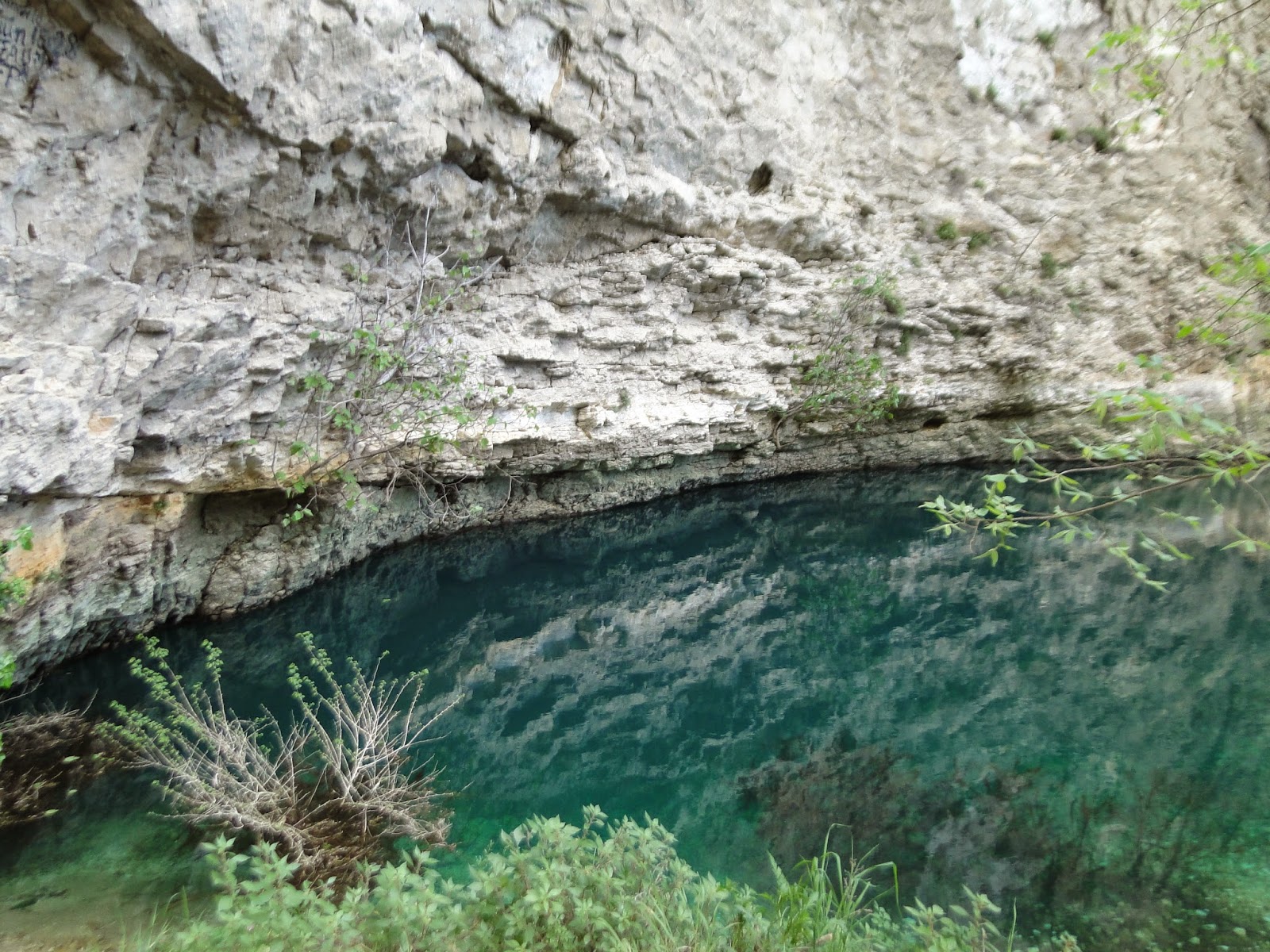"So, where do you come from?"
"Oh, not far. I'm from 04."
"Ahaaam. . ."
And then the clueless gringo takes out his portable French map and looks up the corresponding number. If you happen to take maps with you to parties, of course.
 |
| The 96 departments are listed alphabetical order, but are spread out over the territory. Vaucluse is in red. |
That said, I didn't have high expectations when entering the department of Vaucluse. As far as I knew, the name "Vaucluse" didn't mean a river, mountain, or anything else potentially exciting for an environmental scientist. I expected to encounter a very boring, middle-of-nowhere land where grass didn't grow very high because goats were constantly eating it.
What I did find was a beautiful blue river, the prettiest red rocks I've ever seen, and a sign saying : IT IS FORBIDDEN TO BOTHER THE VIPERS.
I thought it was a joke, but no. Vipers do exist in France.
 |
| Vallis Clausa, the origins of Vaucluse. |
 |
"Vaucluse" should really be named "Blue River of Paradise". Really.
|
Today it's an important tourist attraction, and the city of "Fontaine de Vaucluse" knows how to handle the attention. You'll find a short scenic path winding up a gentle slopewith craggy mountains following you on each side, bordered by the lovely Sorgue river on the right and provencial boutiques on the right. The ice cream is particularly notorious.
 |
| A typical view from the path. |
And if you have time to spare in this lovely department, don't miss the Ochres of Provence. They are red/orange colored rocks that rival those of the Grand Canyon, except on a smaller scale. The rocks' odd colors come from millions of years ago, when France was covered by a tropical forest. For centuries, mining companies plowed these lands to extract color pigments from the ochres. Today, most of them are in disuse, as natural color pigments have been gradually substituted for chemical compounds. The sites have left colorful scars across in Provencial Colorado, and today, it is another profitable tourist attraction.
 |
| Colorado Provençal |
 |
| An old mining site at Roussillon |
Unless, of course, you study environmental science and your school takes you to these sites for free ;) But that's not to say that it's all fun and games- we study hard. The fountain of Vaucluse, for example, is a classic portrait of what I'm currently researching - karstic networks that drain water from large watersheds. Who's to say that beauty and work can't be together?
As a friend of mine said, "It's a magical place. You ask yourself- where does the water come from? As a scientist, I know, but I still like to believe that it's unreal."
Thanks Seb for his English interview and for my GERIMA class that I'm so proud of, because they make these experiences unforgettable.
Not only vipers exist France, but they can be used to make alcohol! As a friend told me, the snake is placed in a bottle of alcohol to release venim. The drink is called "Vipérine" and can be found in Southern France.
RépondreSupprimer